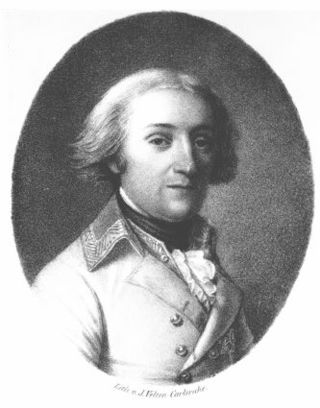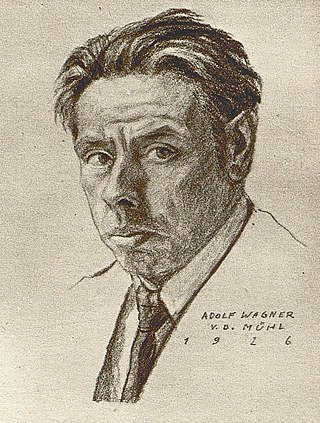
Upper Austria is one of the nine states or Länder of Austria. Its capital is Linz. Upper Austria borders Germany and the Czech Republic, as well as the other Austrian states of Lower Austria, Styria, and Salzburg. With an area of 11,982 km2 (4,626 sq mi) and 1.49 million inhabitants, Upper Austria is the fourth-largest Austrian state by land area and the third-largest by population.

The Innviertel is a traditional Austrian region southeast of the Inn river. It forms the western part of the state of Upper Austria and borders the German state of Bavaria. The Innviertel is one of the four traditional "quarters" of Upper Austria, the others being Hausruckviertel, Mühlviertel, and Traunviertel.

CasparErasmus Duftschmid was an Austrian naturalist and physician who made significant contributions to entomology, especially Coleoptera.

Ampflwang im Hausruckwald is a municipality in the district of Vöcklabruck in the Austrian state of Upper Austria.

Karl Aloys zu Fürstenberg was an Austrian military commander. He achieved the rank of Field Marshal and died at the Battle of Stockach.
Andreas Bolek was an Austrian Nazi who served as the Gauleiter of Upper Austria from 1927 to 1934. He emigrated to Nazi Germany where he became a Reichstag deputy, the Police President of Magdeburg and an SS-Brigadeführer. At the end of the Second World War, he committed suicide when Allied forces entered Magdeburg.

Adolf Wagner von der Mühl was an Austrian sculptor.
The following is a timeline of the history of the city of Linz, Austria.

The St. Nikola Abbey is a former monastery of the Augustinian canons and today's mother house of the German Oratory Sisters in Passau, Lower Bavaria, Germany.
After having been forced to sue for peace with Sweden in 1700, the Danish army was much larger than the kingdom could support. The king then decided to put almost half of the army under Allied command during the War of the Spanish Succession. Ten thousand soldiers served as an auxiliary corps to the Habsburg monarchy, fighting under Eugene of Savoy in northern Italy, including the battles of Cremona and Luzzara. Later they participated in the suppression of the Hungarian insurgency.
Franz Kain was an Austrian writer and politician.
Marianne "Mariandl" Feldhammer was an Austrian resistance activist during the Nazi years. She was one of the most important women in the "Willy-Fred" group around Sepp Plieseis. She was the only woman who knew the way to the so-called "Hedgehog" used by anti-Nazi partisans, to which by the end of the war she had herself made several deliveries of food and/or messages.
Gertrud Fussenegger was an Austrian writer and a prolific author, especially of historical novels. Many commentators felt that her reputation never entirely escaped from the shadow cast by her enthusiasm, as a young woman, for National Socialism.

Raiffeisenlandesbank Oberösterreich AG is a credit institution and grouping of cooperative banks founded in the 1900s and headquartered in Linz, Austria. It is the central institution of the Raiffeisen Banking Group in Upper Austria and the largest of Austria's eight provincial central banks.
Alois Dorn was an Austrian visual artist known in particular as a sculptor, a painter, a glass-painter and a creator of mosaics.
Heinrich Gattermeyer was an Austrian composer and music educator.
The Anton Bruckner Prize is the main Culture Prize of the Province of Upper Austria for music. The prize, which is awarded by the Land of Upper Austria, is named after the composer Anton Bruckner, who was cathedral organist in Linz from 1855 to 1868. The award is endowed with 11,000 euros and is presented in a ceremony in Linz.

Balduin Sulzer (Cistercians) (as Josef Sulzer was an Austrian Roman Catholic priest. He became known as a music educator and composer.
Gisela Tschofenig was an (illegal) Austrian Communist political activist who after 1938 became an anti-government resistance activist. In 1945 fellow detainees at the Schörgenhublabour camp, who had heard overnight shots on 27/28 April, after seeing Tschofenig called outside with two other women, had their fears confirmed the following morning when one of the camp guards was seen to be wearing their friend's "mountain boots".

Michael John is an Austrian historian and exhibitions-curator, internationally known for his research on European and Jewish migration, and on Nazism.










